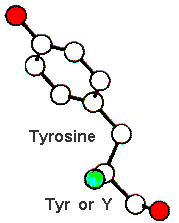

Harel Weinstein, director of the Institute for Computational Biomedicine at Weill Cornell Medicine, along with co-authors Ekaterina Kots (who developed the method) and Derek M. Called the Equilibrium Constant pH (ECpH) method, it presents a significant advance in the ability of computational simulations to more accurately represent the way in which a human cell's membrane proteins look and how they function under different conditions encountered in the life of the cell.

Credit: Ekaterina Kots, Weill Cornell Medical SchoolĪ team of researchers from Weill Cornell Medical School's Department of Physiology and Biophysics has developed a new computational technique to conduct molecular dynamics simulations of proteins at the specific concentration of hydrogen ions (pH) at which they function. The average value of the total energy of a system with multiple pH-dependent protonation sites (k) and protonation probabilities contained in the set λ(pH) is calculated from the ECpH simulation trajectory as shown. This representation shows the ECpH simulated conformational transition of a CLC1-ec molecular dimer embedded in a membrane, from its conformation at pH4 (in yellow) to the one it adopts at pH8 (in grey).


 0 kommentar(er)
0 kommentar(er)
